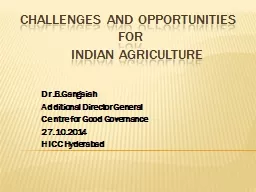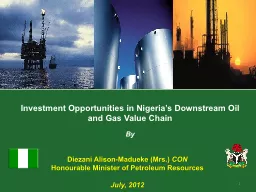PPT-Challenges and Opportunities
Author : sherrill-nordquist | Published Date : 2017-03-16
for INDIAN AGRICULTURE DrBGangaiah Additional Director General Centre for Good Governance 27102014 HICC Hyderabad Indian Agriculture Macro Dimensions
Presentation Embed Code
Download Presentation
Download Presentation The PPT/PDF document "Challenges and Opportunities" is the property of its rightful owner. Permission is granted to download and print the materials on this website for personal, non-commercial use only, and to display it on your personal computer provided you do not modify the materials and that you retain all copyright notices contained in the materials. By downloading content from our website, you accept the terms of this agreement.
Challenges and Opportunities: Transcript
Download Rules Of Document
"Challenges and Opportunities"The content belongs to its owner. You may download and print it for personal use, without modification, and keep all copyright notices. By downloading, you agree to these terms.
Related Documents














